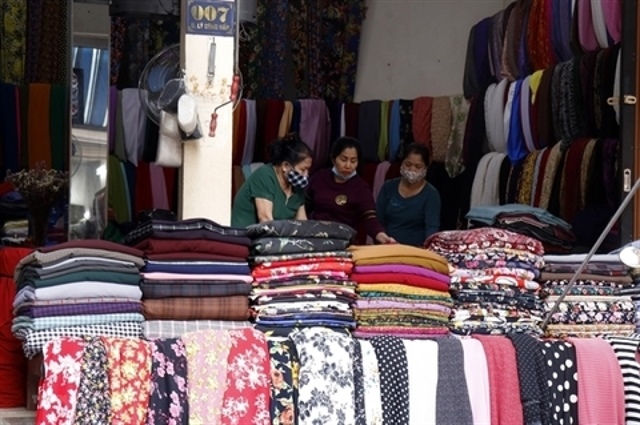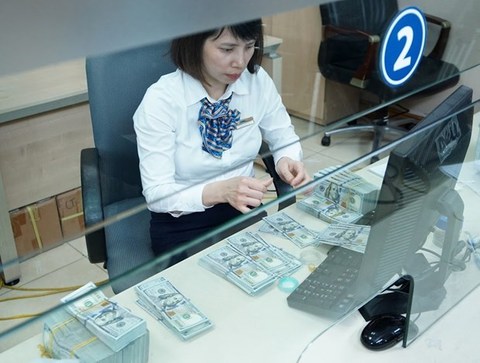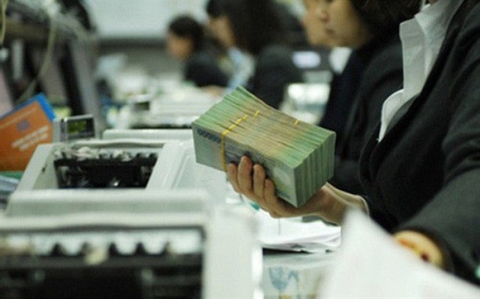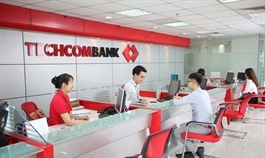Resorting to tax policy to mitigate burden on agriculture sector
Resorting to tax policy to mitigate burden on agriculture sector
The agriculture sector is experiencing unprecedented challenges owing to a considerable increase in input costs and a drop in sales prices. Duong Manh Hung, head of Agriculture, Forestry and Fisheries Statistics Department of the General Statistics Office, talked with Manh Bon about the need for tax policy to temporarily resolve the agricultural sector's difficulties, combined with the long-term goal of reducing reliance on imported materials.
The economy is facing the devasting consequences of the COVID-19 pandemic. The construction and service sectors reported negative growth in the third quarter, yet agriculture maintained its growth momentum. How was this possible?
In the third quarter of 2021, for the first time, GDP growth declined sharply by 6.17 per cent, in which construction and services shed 5.02 per cent and 9.28 per cent, respectively. On the other hand, agriculture retained positive growth of 1.04 per cent. In the first half of 2021, the agriculture sector surged 2.74 per cent, contributing 1.42 per cent to GPD growth.
The above outcome stems from the favourable weather conditions and the crop structure transformation in an effective direction. Along with rice, the productivity and production output of perennial plants such as cashew, pepper, rubber, tea, and fruit trees were fairly high. Many products have been cultivated as per VietGAP and GlobalGap standards to reach demanding export markets. The practices are the implementation of certified manufacturing processes to provide clean and safe agricultural goods.
Despite the detrimental impacts of the COVID-19 pandemic on global trade, Vietnam’s total export value of agricultural products still amounted to $17.7 billion, a 17.6 per cent jump, with vegetable export constituting $2.8 billion during the period.
Albeit the global health crisis has caused temporary disruptions to the production-processing-consumption supply chain of livestock breeding, aquaculture, and seafood exploitation, the abundant supply of agricultural products could still meet domestic and export demands.
What are the current difficulties facing the livestock and aquaculture sectors?
The increase in input costs and the fall in selling prices over the past 2-3 years poses unprecedented challenges to the livestock industry, particularly pig farming. This is a crucial problem as pork constitutes 60 per cent of total production. At the end of September 2021, the price of live pork for slaughter is estimated at VND35,000-50,000 ($1.52-2.17) per kg, a sharp decline on-year.
While the substitution of imported ingredients must occur gradually, production cannot be halted. Hence, tax policy implementation should be emphasised at the moment.
On the flip side, animal feed prices have risen continuously since 2020 owing to the decline in global supply and the increase in transportation cost from the shortage of ships and containers, resulting in a 9.28 per cent increase in animal feed imports against 2020.
Many farmers have abandoned their trade because of the consistent losses in earnings. The situation slowed down economic growth while simultaneously exerting pressure on inflation at the end of 2021 amid an anticipated soar in pork consumption during the Lunar New Year holidays.
Similarly, in the fisheries sector, aquafeed represents 50-77 per cent of total production costs. As aquafeed, breeds, and relevant medication are almost entirely imported, seafood production and processing remains unstable.
Another concern is the shortage of materials for export processing, as the sharp jump in aquafeed price has badly affected farmers’ profitability, forcing many of them out of business.
Agriculture production is contingent upon natural conditions and the global market. How can we overcome this situation?
The agriculture, fisheries, and livestock industry rely heavily on uncontrollable factors such as weather or disease, and the demand of foreign markets. Hence, the industry is unstable by nature. For instance, in pig farming, the cost of animal feed accounts for 65-75 per cent of the total costs, increasing production costs by VND130,000- 230,000 ($5.65-10) if the feed cost rose VND1,000 (4.3 US cents) per kg.
Because imported ingredients account for 80-85 per cent of animal feed, the price of animal feed will go proportionally with global market conditions. Therefore, firms and production households might have to save up ingredients for production amid market price fluctuations.
Imported animal feed cannot be substituted by domestic ingredients. Should tax policy be utilised to mitigate difficulties facing the agriculture sector?
While the substitution of imported ingredients must occur gradually, production cannot be halted. Hence, tax policy implementation should be emphasised at the moment.
I would say that policymakers should consider the adoption of new policies to regulate animal feed price during the forthcoming National Assembly session, such as fixing import tax and VAT on animal feed, and associated materials for animal feed production such as corn grains or soybean meal. In addition, we should find a way to lower transportation, storage, and electricity costs for seafood firms in order to lower production costs, assure supply, and stabilise domestic production.
























